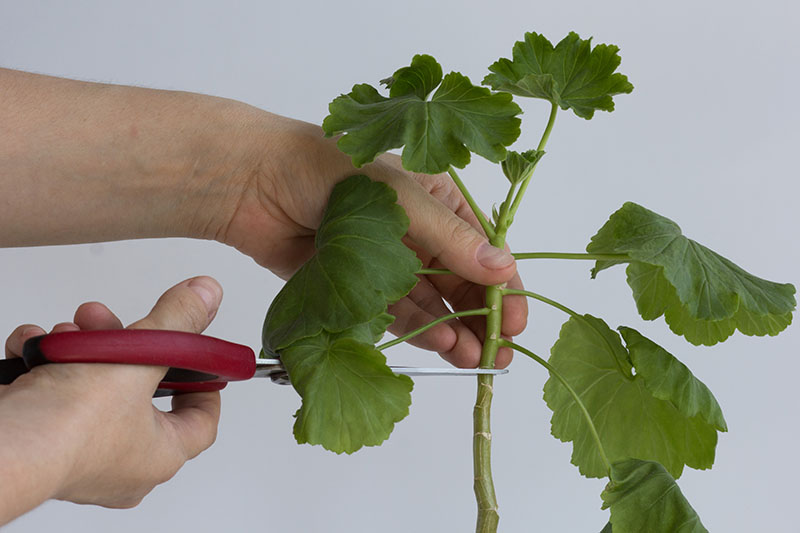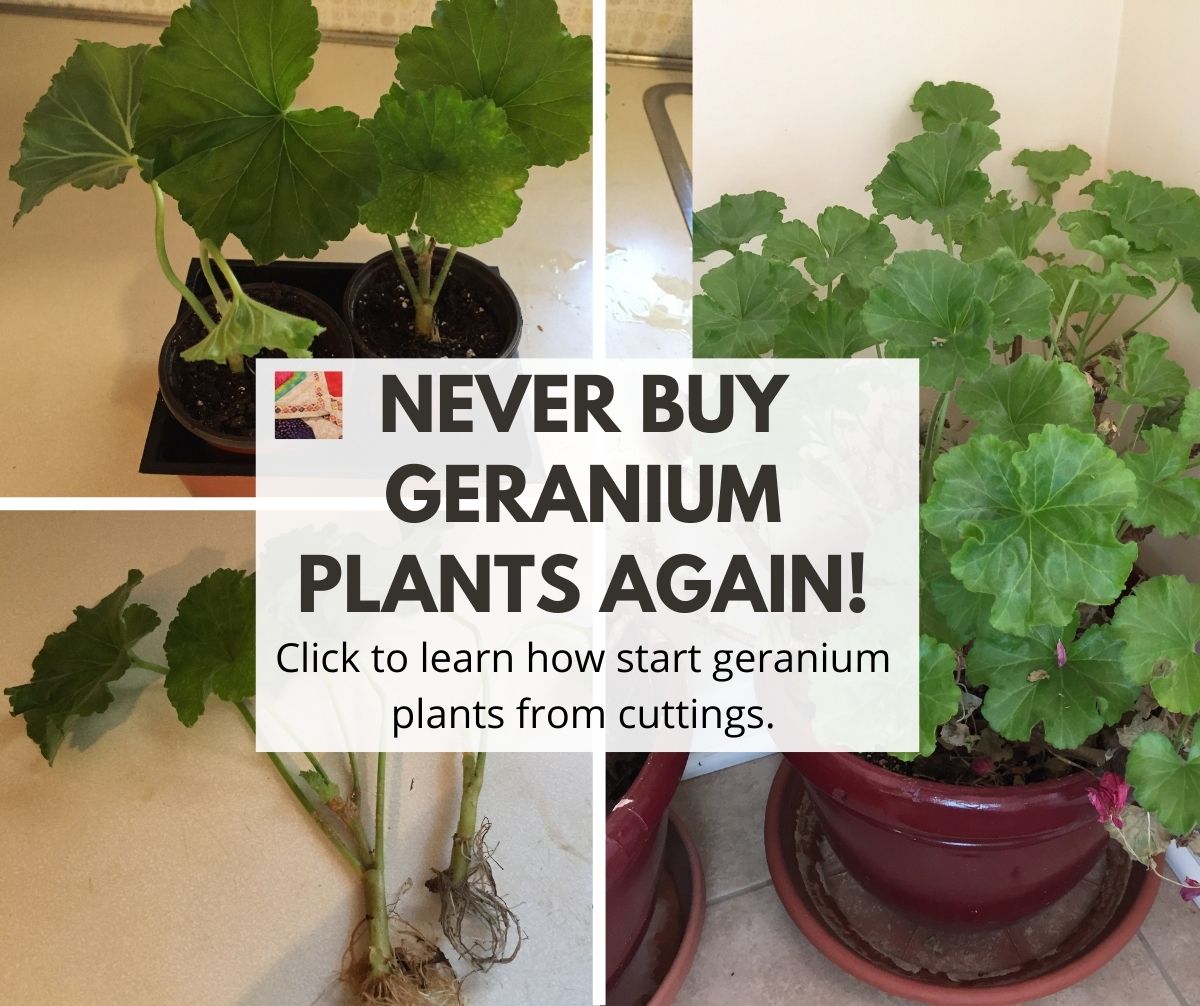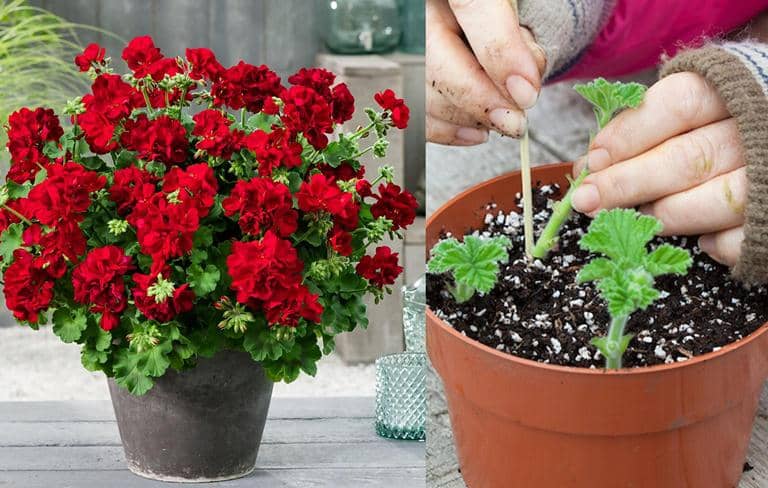Why Choose Geranium Cuttings Over Seeds
When deciding how to propagate geraniums, many gardeners ask themselves, “Can you grow geraniums from cuttings?” The answer is a resounding yes, and for good reason. Growing geraniums from cuttings offers several advantages over traditional seed propagation. For one, cuttings produce plants that are genetically identical to the parent plant, ensuring that the new geraniums will retain the same desirable traits. This is particularly important for gardeners who have fallen in love with a specific geranium variety and want to replicate its beauty. In contrast, seeds can produce plants with varying characteristics, which may not always be desirable.
Another significant benefit of growing geraniums from cuttings is the faster growth rate. Cuttings can produce roots and start growing new leaves within a matter of weeks, whereas seeds can take months to germinate and mature. This faster growth rate means that gardeners can enjoy the beauty of their geraniums sooner, and with less effort. Additionally, cuttings have a higher success rate than seeds, which can be finicky and prone to failure. By choosing to grow geraniums from cuttings, gardeners can increase their chances of success and enjoy a bountiful harvest of beautiful blooms.
How to Take Geranium Cuttings for Maximum Success
To increase the chances of successful geranium propagation, it’s essential to take healthy cuttings. Start by selecting stems with fresh, green growth and no signs of disease or pests. Avoid taking cuttings from weak or leggy stems, as they may not root well. Instead, choose stems with plenty of leaves and a sturdy base.
When cutting the stems, use a sharp, clean knife or pruning tool to make a clean cut just above a node (where a leaf meets the stem). Cut at a 45-degree angle, and remove any lower leaves that will be below the soil line. This helps prevent the cutting from rotting and promotes healthy root growth.
Prepare the cut ends by dipping them in a rooting hormone powder or liquid to stimulate root growth. This step is crucial, as it helps the cutting develop a strong root system. Gently tap off any excess powder or liquid to prevent over-application.
Finally, trim the lower leaves to about half their original size to reduce transpiration and prevent the cutting from drying out. This step is especially important when growing geraniums from cuttings, as it helps the plant focus its energy on developing roots rather than supporting excessive foliage.
The Importance of Root Hormone and Soil Quality
When it comes to growing geraniums from cuttings, two crucial factors can make all the difference between success and failure: root hormone and soil quality. Root hormone plays a vital role in promoting root growth, increasing the chances of successful propagation. This natural or synthetic hormone stimulates the cutting to produce roots, allowing it to absorb water and nutrients from the soil. Without root hormone, the cutting may struggle to develop a strong root system, leading to a weak and unhealthy plant.
High-quality soil is equally important, as it provides the necessary support for healthy root development. A well-draining potting mix with a pH between 6.0 and 7.0 is ideal for geranium cuttings. Avoid using regular garden soil, as it can be too dense and may cause waterlogging, which can be detrimental to the cutting. Instead, opt for a soil mix specifically designed for cuttings and seedlings, which will provide the right balance of nutrients and moisture.
By combining root hormone with high-quality soil, gardeners can create an optimal environment for their geranium cuttings to thrive. This powerful combination will give the cutting the best chance of developing a strong root system, leading to a healthy and vigorous plant. So, can you grow geraniums from cuttings? With the right techniques and materials, the answer is a resounding yes!
Creating the Ideal Environment for Geranium Cuttings
To give geranium cuttings the best chance of success, it’s essential to create an ideal environment that promotes healthy root growth and development. Temperature plays a critical role, with an optimal range of 65°F to 75°F (18°C to 24°C) for rooting. Avoid placing cuttings in areas with drafts or extreme temperatures, as this can cause stress and reduce the chances of successful propagation.
Humidity is another crucial factor, as geranium cuttings thrive in environments with moderate to high humidity. To achieve this, gardeners can cover the pot with a clear plastic bag or a cloche, which will help maintain a humid microclimate. However, be sure to remove the covering periodically to prevent the buildup of condensation and fungal diseases.
Lighting is also vital, with geranium cuttings requiring bright, indirect light to promote healthy growth. Placing the cuttings near an east- or west-facing window is ideal, as this will provide the necessary light without causing scorching or overheating. Avoid direct sunlight, especially in warmer climates, as this can cause the cutting to dry out and fail.
Watering is a delicate balance, as geranium cuttings require consistent moisture without being waterlogged. Water the soil gently but thoroughly, making sure not to wash away the rooting hormone or disturb the roots. Fertilization can also be beneficial, with a balanced, water-soluble fertilizer applied at half strength to promote healthy growth.
By creating an ideal environment with the right temperature, humidity, light, and water conditions, gardeners can increase the chances of successful geranium propagation. With the right care and attention, can you grow geraniums from cuttings? Absolutely, and the rewards of successful propagation make it well worth the effort!
Common Mistakes to Avoid When Growing Geraniums from Cuttings
While growing geraniums from cuttings can be a rewarding experience, it’s essential to avoid common mistakes that can lead to failed propagation. One of the most critical errors is overwatering, which can cause the cutting to rot and prevent root growth. To avoid this, make sure to water the soil gently but thoroughly, and avoid getting water on the leaves or crown of the plant.
Underwatering is another common mistake, as geranium cuttings require consistent moisture to develop healthy roots. Check the soil daily, and water when the top inch of soil feels dry to the touch. Inadequate light is also a common issue, as geranium cuttings require bright, indirect light to promote healthy growth. Avoid placing cuttings in areas with low light, such as basements or north-facing windows.
Other mistakes to avoid include using low-quality soil or root hormone, failing to provide adequate humidity, and not pruning the cutting correctly. By being aware of these common mistakes, gardeners can take steps to prevent them and increase the chances of successful geranium propagation. Remember, can you grow geraniums from cuttings? With the right techniques and attention to detail, the answer is a resounding yes!
Additionally, it’s essential to monitor the cutting’s progress regularly, looking for signs of root growth, such as new leaf growth or a firm stem. If the cutting is not showing signs of growth after a few weeks, it may be necessary to start again with a fresh cutting. By being patient and persistent, gardeners can overcome common mistakes and achieve successful geranium propagation.
How Long Does it Take to Grow Geraniums from Cuttings?
The time it takes to grow geraniums from cuttings can vary depending on several factors, including the quality of the cutting, the rooting medium, and the environmental conditions. On average, it can take anywhere from 2-6 weeks for geranium cuttings to develop roots and start growing new leaves.
During the first week, the cutting will focus on developing roots, and it’s essential to provide the right conditions to support this process. After 1-2 weeks, the cutting should start to produce new leaves, which is a sign that it’s developing a strong root system. By week 3-4, the new leaves should be more prominent, and the plant should start to take shape.
Factors that can influence the growth rate of geranium cuttings include temperature, humidity, and light. For example, cuttings placed in a warm and humid environment with bright, indirect light may develop faster than those in cooler and darker conditions. Additionally, the quality of the rooting hormone and soil can also impact the growth rate.
It’s also important to note that geranium cuttings can take longer to develop roots and grow if they are taken from older or less healthy plants. In these cases, it may take 6-8 weeks or more for the cutting to mature. However, with the right techniques and care, can you grow geraniums from cuttings? Absolutely, and the rewards of successful propagation make it well worth the effort!
By understanding the estimated timeline for geranium cuttings to root and grow, gardeners can plan and prepare for the propagation process, increasing the chances of success and enjoying the many benefits of growing geraniums from cuttings.
Tips for Transplanting and Caring for Mature Geraniums
Once geranium cuttings have developed a strong root system and are growing new leaves, it’s time to transplant them into larger containers or directly into the garden. When transplanting, choose a location with well-draining soil and full sun to partial shade, depending on the geranium variety.
To ensure a successful transplant, gently remove the geranium from its pot, taking care not to disturb the roots. Plant the geranium at the same depth as it was previously, and water thoroughly. Fertilize the geranium with a balanced fertilizer to promote healthy growth and flowering.
Regular pruning is essential to maintain the shape and size of mature geraniums. Remove any dead or damaged leaves or stems, and cut back the plant by about one-third to encourage new growth. This will also promote more blooms and prevent the plant from becoming leggy.
Pest management is also crucial when caring for mature geraniums. Keep an eye out for common pests like aphids, whiteflies, and spider mites, and treat the plant promptly if you notice any infestations. Regularly inspecting the plant and taking action quickly can help prevent the spread of disease and pests.
By following these tips, gardeners can enjoy the many benefits of growing geraniums from cuttings, including vibrant blooms, attractive foliage, and a low-maintenance addition to the garden or indoor space. And, with the right techniques and care, can you grow geraniums from cuttings? Absolutely, and the rewards of successful propagation make it well worth the effort!
With proper care and attention, geraniums can thrive for years to come, providing a beautiful display of color and texture. By understanding the needs of mature geraniums, gardeners can enjoy the fruits of their labor and continue to propagate new plants from cuttings, perpetuating the cycle of growth and beauty.
Conclusion: Growing Geraniums from Cuttings Made Easy
By following the steps and tips outlined in this guide, gardeners can successfully propagate geraniums from cuttings and enjoy the many benefits of growing these beautiful plants. From faster growth rates to true-to-parent plant characteristics, the advantages of growing geraniums from cuttings are clear.
By understanding the importance of root hormone, soil quality, and optimal environmental conditions, gardeners can increase their chances of success and enjoy a bountiful harvest of vibrant blooms and attractive foliage. And, with the right techniques and care, can you grow geraniums from cuttings? Absolutely, and the rewards of successful propagation make it well worth the effort!
Whether you’re a seasoned gardener or just starting out, growing geraniums from cuttings is a rewarding and accessible way to add some color and beauty to your garden or indoor space. So why not give it a try? With a little patience and practice, you can be enjoying the many benefits of geraniums in no time.
Remember, the key to success lies in attention to detail, careful planning, and a willingness to learn and adapt. By following the guidelines outlined in this article, you’ll be well on your way to growing healthy, thriving geraniums from cuttings. So go ahead, take the first step, and discover the joys of propagating geraniums from cuttings for yourself!









